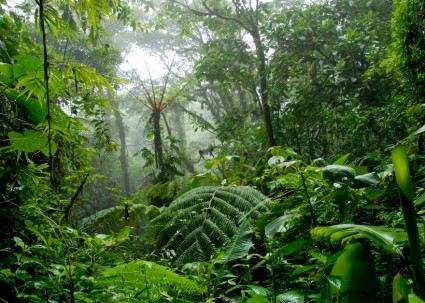In the midst of decreasing expectations over a global climate deal, saving forests has been held out as the one thing that might be achieved over the next two weeks in Copenhagen. Says Newsweek:
“One of the few tangible achievements expected from the climate talks in Copenhagen this month is agreement on a program called REDD, or Reducing Emissions From Deforestation and Forest Degradation, a complex set of regulations that would help developing countries keep their rainforests standing by turning their carbon-storing capacity into a source of income.”
Others, including the AP, have joined in the chorus of excitement. It sounds too good to be true: can we actually save the climate by saving the rainforest? And can Copenhagen produce such a deal?
Of course, it’s very hard to tell at this point what the outcome of Copenhagen is likely to be – some form of political agreement, probably, that may or may not include forests as a part of it. However, what’s very clear is that to meet the expectations that forests could be protected by a climate change treaty, two major things need to happen here at Copenhagen.
1. The REDD treaty text has to get a whole lot better, and
2. We need a deal that actually keeps climate change below 2 degrees Celsius of warming, i.e. a deal that deeply reduces emissions from fossil fuels.
 Current treaty text for REDD is not in good straights. Major issues are still unresolved, including the insertion of essential social and environmental safeguards to ensure that REDD monies do what they are intended to do. It’s an unfortunate coincidence that countries with the largest stands of remaining natural forests are also some of highest levels of corruption on Earth. As pointed out in a recent Human Rights Watch report on Indonesia’s illegal logging problem:
Current treaty text for REDD is not in good straights. Major issues are still unresolved, including the insertion of essential social and environmental safeguards to ensure that REDD monies do what they are intended to do. It’s an unfortunate coincidence that countries with the largest stands of remaining natural forests are also some of highest levels of corruption on Earth. As pointed out in a recent Human Rights Watch report on Indonesia’s illegal logging problem:
“In particular, there is a critical need for adequate safeguards to be in place to accurately monitor the actual logging rates and their legal compliance, and stop the flow of cash if forests are not protected. It will be important to protect against conflicts of interest by ensuring an institutional separation between those who will benefit from carbon payments and those overseeing performance. In the absence of safeguards, the carbon finance market will simply inject more money into an already corrupt system, shortcutting needed reforms and exacerbating the situation.”
REDD has not yet established a way to recognize the rights of the indigenous communities who live in most of the forest areas that would be targeted by REDD and whose lives and livelihoods will be altered if the agreement goes forward. This is a major flaw, and the reason that many Indigenous groups here are deeply suspicious of REDD.
Also, as currently formatted, REDD does not provide any guarantees that forests could not still be cut down. Under the current text, endangered or high conservation value forests could still be logged and countries could be paid to do it. This is because of poor forest definitions, but also because there is still no explicit language against it. Unless this is fixed, REDD monies could actually be used to subsidize logging in primary tropical forests, a totally perverse outcome.
No matter how good REDD is, however, tropical forests will not the continued unregulated emissions of greenhouse gases from fossil fuels into the atmosphere. According to Climate Analytics, who is tracking the aggregate commitments of countries in the Copenhagen process so far, “the emission commitments and pledges put forward by industrialized and developing countries for the Copenhagen climate negotiations shows that the world is headed for a global warming of well over 3 degrees C by 2100. Carbon dioxide concentrations are projected to be over 650 ppm, with total GHG concentrations close to 800 ppm CO2 equivalent.”
Like many other ecosystems, tropical forest will just not survive this kind of warming. Already, rainforests like the Amazon have experienced droughts that disrupt the ecosystem and inhibit their ability to absorb the world’s carbon. In a statement on their website, the Society for Conservation Biology states that:
“… we now have evidence that whole rainforests can — and in 2005 for one year, the Amazon did — die faster than they grow, in response to climate driven drought and heat, in this case resulting in higher net emissions of carbon dioxide than the CO2 emitted by all of Europe and Japan. Because life as we know it relies upon the Amazon rain forest, and all forests, we do not have any significant room left for additional greenhouse gases and we must reduce them now. The climate policy principles offer ways forward and cite studies offering further details as well.”
We have to save forests if we are going to save the climate, that’s true. But just saving rainforests isn’t actually sufficient to stop climate change. We have to both reduce fossil fuel emissions AND take strong action to protect forests. Will it happen this week? I’ll keep you posted.
Spread the news on what the føck is going on in Copenhagen with friends via email, Facebook, Twitter, or smoke signals.



